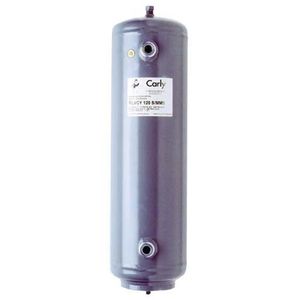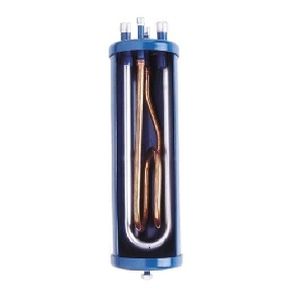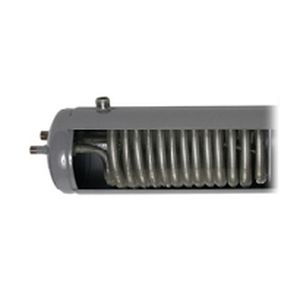
Centrifugal accumulator LCYfor refrigeration circuits
Add to favorites
Compare this product
Characteristics
- Technology
- centrifugal
- Application
- for refrigeration circuits
Description
Elimination of risks linked to the return of refrigerant in its liquid phase and to the massive oil intake at compressor’s suction of refrigerating and air conditioning installations.
The suction line accumulators LCY and LCYE are particularly recommended for installations that are:
➜ exposed to sudden thermal load variations,
➜ whose piping lengths are important,
➜ operating with cycle inversions.
The LCYE suction accumulators with heat exchanger are particularly recommended:
➜ For installations with a low overheating of refrigerant vapours at compressor suction (liquid cooler, low temperature display cabinets, vehicle refrigerating, etc …).
➜ For installations where the suction line accumulator is positioned outside (in this case, the exchanger allows a faster reevaporation of the liquid).
Maximum working pressure: up to 46 bar.
The pressure drops are low and never go over 0.3°C.
The heat exchanger allows the increase of the refrigerant’s refrigerating effect, by high pressure liquid sub-refrigerating, upstream of the pressure relief valve; it therefore prevents the risks of gas presence at the intake of the pressure relief valve.
A hole on the lower part of the inner rod ensures liquid expansion and return to the compressor of the oil that could be trapped inside the suction line accumulator.
From models LCY(E) 1517 S/MMS, presence of a connection on the low part for an oil return by gravity.
A very large range of suction line accumulators is available, from 0.9 to 70 litres.
Catalogs
No catalogs are available for this product.
See all of CARLY‘s catalogsOther CARLY products
Receivers, suction accumulators and water cooled condensers
Related Searches
*Prices are pre-tax. They exclude delivery charges and customs duties and do not include additional charges for installation or activation options. Prices are indicative only and may vary by country, with changes to the cost of raw materials and exchange rates.





